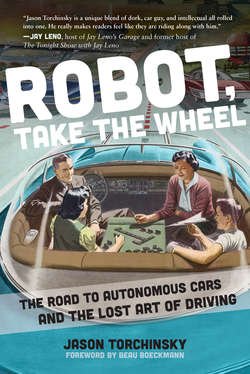Читать книгу Robot, Take the Wheel - Jason Torchinsky - Страница 25
На сайте Литреса книга снята с продажи.
1980s: Ernst Dickmanns: The Man Who Made Cars See
ОглавлениеIf the overall concept of vehicles driven via true computer “vision” can be said to have a father, that father would have a German accent and a hilarious last name: Dickmanns. Ernst Dickmanns was the father of a particular set of Mercedes-Benz cars and vans that drove via information captured from cameras and interpreted by some very hardworking computers.
Dickmanns started out working in aerospace, including a stint at NASA, where he researched orbiting spacecraft reentry. By the early 1980s he’d migrated to focusing on the development of machine vision to allow autonomous driving.
Dickmanns’s first real application of his research was the result of a partnership with Mercedes-Benz, which was hoping to have something really exciting to unveil for their centenary in 1986: a self-driving car. To achieve this goal, Dickmanns outfitted a Mercedes-Benz L508D T2 van with a lot of computing hardware, cameras, servos, and actuators to operate the van’s driving controls.
Since it was 1986, the computing hardware, while state-of-the-art, wasn’t really fast enough to process a full visual field captured by the camera in real time—a full one hundred seconds was required to process a full-frame image from the camera. To get around this, there was a master computer, but actual processing of the images from the camera was passed to a parallel-processing system consisting of ten Intel 8086 CPUs—the same ones that powered the IBM PC AT.
These ten CPUs would only process certain tiny 32 by 32 pixel areas determined to be interesting in some way. The result was that the important parts of the camera’s feed (high contrast areas, areas in motion) could be processed much quicker, with only twenty microseconds needed to extract the important and required information from the visual feed.20
Dickmanns called his machine vision solution “Dynamic Vision,” and considered it a “4-D” approach to machine vision, incorporating both strict processing of the video feed and time delays, as well as predictive behavior information for certain classes of identified objects, things like “spatiotemporal models for motion processes of objects,” and more.21
Dickmanns’s first autonomous van, called the VaMoRs, first drove autonomously on non-public sections of Germany’s Autobahn in 1986. By 1987 the vans were on public roads driving at nearly 60 mph; collision avoidance and obstacle detection were implemented, allowing the van to follow a car in a convoy if desired.
